#hinduist
Text

Radharani 🌙
2 notes
·
View notes
Text
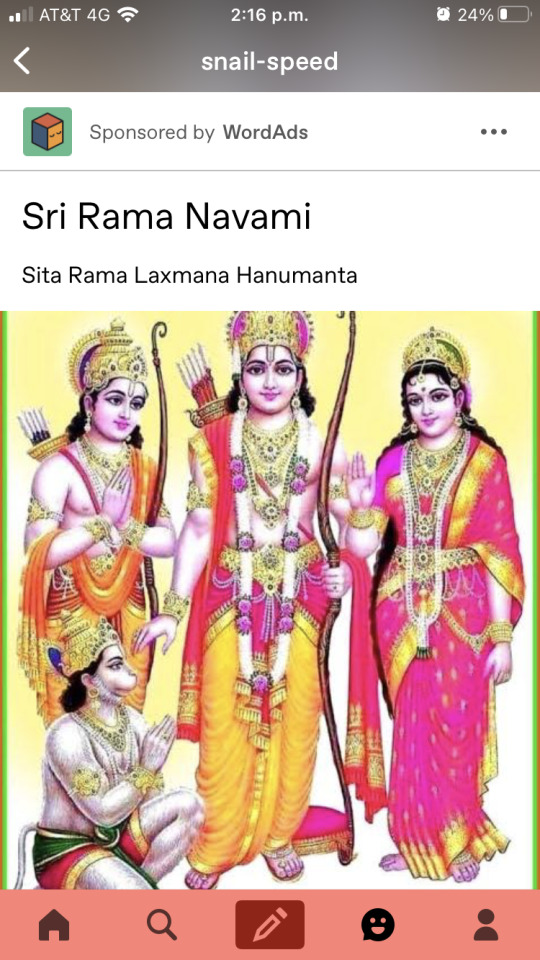
Tumblr I just wanted to check my post what the hell is this
2 notes
·
View notes
Text
Okay so there is this idea in my mind that there is big amount of cut content in dds and one of the things that makes me think about this is Cerberus desing . You find Lupa in the only area of the game that has some short of mass of water you can " swim" in and lots and lots of canals. Why is this important? Because cerberus in digital devil saga has for some reason desing features of a acuatic creature

As you can see he kinda looks like a shark in his visual key.
Cerberus is also very dissonant with the rest of the cast who are from hinduist and budhist lore
Cerberus is kinda a mascot for the series so if you are going to transform a monster into a random ass sharkdog makes sense to pick him.
To me the idea maybe was they intended for lupa to be some short of underwater combat or maybe even have Lupa as a transport method through the dungeon he appears in.
Besides that i always thought there were big cuts with him and jinana like they present themselves as these charaters that are very important for the plot and they last mere seconds of screen time before the plot kills them. So i imagine they had something else intended with them, probably more akin to the novels.
Oh and this is hc territory but holy damm there is this strong queer coding on argilla and jinana like dammmmmmmm
#i wrote this while i played baldurs gate#sorry#digital devil saga#dds#megaten#oh yeah this is me going insane again sorry sorry#the fact that the person who i was playing bg3 with had his gf besides him and yelled strong enough that#it sounded through discord “ WHY IS THERE ALWAYS A NAKED MAN SPEAKING WITH AN OWLBEAR”#thats me i was the naked man#and i got to hear that while i wrote this
33 notes
·
View notes
Text
There are bloggers and people out here causing OR there have been people and bloggers out here who have caused my best friend Issues/unecessary drama on this Illusionary app.
Let me tell you that She and I are the Buddha In this situation, and those bloggers/people who stirred up some unecessary Issues with the hope of provoking us (Remember that the wise/enlightened never gets provoked by any Illusionary words and any illsuonary PERSON, even If just for an example, the words and the person were real my respone would remain the same of course ♡♡♡.) Is the hinduist preist present in the true story that I've shared below:
Buddha, seated beneath the serene bodhi tree, graciously imparted his wisdom to a gathering of eager learners. Among them was a former Hindu priest, who, upon embracing Buddhism, drew the ire of a close friend deeply rooted in Hinduism. Enraged by the conversion, the priest stormed into Buddha's teaching space one day, unleashing a torrent of vile insults and curses upon the enlightened teacher.
Undisturbed by the priest's outburst, Buddha maintained his composed posture and, with a gentle smile, began to engage the agitated visitor.
Buddha: "Greetings, esteemed priest. In your temple, you offer hospitality to visiting guests, do you not?"
Priest: "Indeed, I do so with utmost reverence."
Buddha: "And if a guest declines the food you offer, what becomes of the uneaten meal?"
Priest: "The uneaten food becomes mine to consume."
Buddha: "Similarly, if a guest refuses the flowers you present, how do you handle the discarded blooms?"
Priest: "The flowers then become my possession to cherish."
Buddha: "And what of the spiritual treasures you bestow upon your guests? If they reject such gifts, what is your course of action?"
Priest: "Those gifts, if spurned, remain in my possession as well."
Buddha: "I have not accepted your curses and insults, for they do not belong to me. Instead, they rightfully belong to you. Keep them, as I have no use for such negativity in my heart. I have not said these words therefore I do not possess them like I have no other possessions."
I hope that every reader who took the time to read this post learned something from a little bit of the Buddha's wisdom, and I wish you all the best.
Be at peace and you'll never be bothered.
-Buddha 2500+ years ago.
My best friend has refrained from uttering those hurtful remarks: hence, none of those words rightfully belong to her. Those bloggers or individuals responsible for the dramatic and disrespectful comments are welcome to retain ownership of their words.
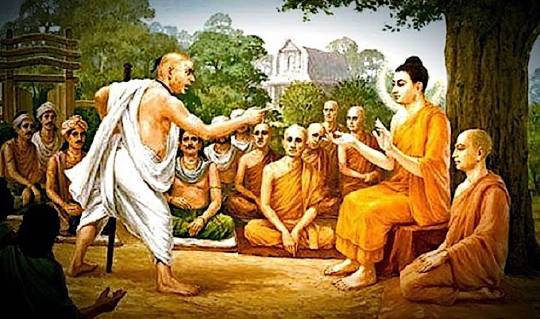
(P.S)( I've been taught this part of the Buddha's life and how he handled the sitaution, In the class that I am learning about buddhism right now.)
#buddhism#buddha#wisdom#wisdomofbuddha#the buddha#atman#enlightened#enlightenment#zen quotes#buddhist monk
7 notes
·
View notes
Text
Even such a silly video like "We 3D printed our farts" is consistent to the allegory and the message that either inspires them or they want to communicate.
So they start with this silly musical back and forth that is often the motivator and essence of their creativity and work. It's how they communicate with each other, even.
They bring this to the next stage, a chef who is about to materialize the music they made.
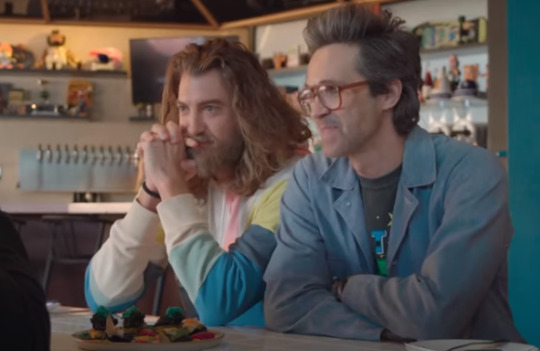

Rhett appeared very sincerely excited to see how their little song was interpreted. It was cute.
The process has now gotten a physical dimension. After Rhett and Link eat the food, they prepare for the digestion, the physical reaction to it. Rhett informs us that the respective fart is "gestated" about 6-8 hours after the meal.
I mean, how to put this, they don't have wombs. The only other thing down there producing something shaped (sorry) is the ass. And I guess they still hold the last frontier of standards (you know, pooping). So fart it is. *Also remember how the Brown Diamond was also ass-themed.
But it still has to be shaped properly. That's where their crew comes in and they are required to shape their farts into one material creation that has... uh... the essence of both of them. An artistic child. Or a farty one.

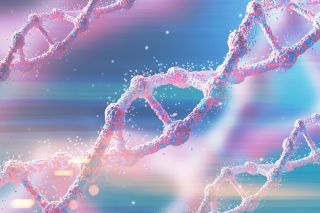
The creation is really a DNA if Rhett and Link were the creators of life, or THIS life.
They get the art baby to a dancer to give it motion.
Based on the art's motion, an artist gives it an appearance.
Lastly, they get the painting to the intuitive musician. They have talked about him before and Rhett had revealed on EB that the musician perceived something extremely significant and particular about him (and Link perhaps) and he was very obviously affected by it, even as he talked about it. It's evident here as well that he is emotional even due to the expectation and the hope that the musician might get close to the truth once more.
BTW the parallelization to a baby is not my assumption

The new music does not resemble the initial one. Rhett leans in to Link to tell him that it is beautiful, although he really hoped it would be the exact same. It almost felt like parents seeing their children becoming their own people but I don't know if this was intentional at all.

The next one, where the song turns into the original one, I am pretty sure that's scripted. It's their hope and persistence to eventually be interpeted correctly.
The song then shifts to the actual song they wrote for this video. A song about creativity being the ultimate vessel of spirituality, life and connection with the universe. Things they discussed extensively in an EB a few months ago. At this point I think they will come out soon but what they'll come out as is Hinduists lol
What I got from this video is: "Our interaction births our creativity and our creations are our babies"
24 notes
·
View notes
Text
A fantasy read-list: A-2
Fantasy read-list
Part A: Ancient fantasy
2) Mythological fantasy (other mythologies)
Beyond the Greco-Roman mythology, which remained the main source and main influence over European literature for millenia, two other main groups of myths had a huge influence over the later “fantasy” genres.
# On one side, the mythology of Northern Europe (Nordic/Scandinavian, Germanic, but also other ones such as Finnish). When it comes to Norse mythology, two works are the first names that pop-up: the Eddas. Compilations of old legends and mythical poems, they form the main sources of Norse myths. The oldest of the two is the Poetic Edda, or Elder Edda, an ancient compilation of Norse myths and legends in verse. The second Edda is the Prose Edda, so called because it was written in prose by the Icelandic scholar Snorri Sturluson (alternate names being Snorri’s Edda or the Younger Edda). Sorri Sturluson also wrote numerous other works of great importance, such as Heimskringla (a historical saga depicting the dynasties of Norse kings, starting with tales intermingled with Norse mythology, before growing increasingly “historically-accurate”) or the Ynglinga saga - some also attributed to him the Egil’s Saga.
Other “tales of the North” include, of course, Beowulf, one of the oldest English poems of history, and the most famous version of the old Germanic legend of the hero Beowulf ; the Germanic Völsunga saga and Nibelungenlied ; as well as the Kalevala - which is a bit late, I’ll admit, it was compiled in the 19th century, so it is from a very different time than the other works listed here, but it is the most complete and influential attempt at recreating the old Finnish mythology.
# On the other side, the Celtic mythologies. The two most famous are, of course, the Welsh and the Irish mythologies (the third main branch of Celtic religion, the Gaul mythology, was not recorded in texts).
For Welsh mythology, there is one work to go: the Mabinogion. It is one of the most complete collections of Welsh folktales and legends, and the earliest surviving Welsh prose stories - though a late record feeling the influence of Christianization over the late. It is also one of the earliest appearances of the figure of King Arthur, making it part of the “Matter of Britain”, we’ll talk about later.
For Irish mythology, we have much, MUCH more texts, but hopefully they were already sorted in “series” forming the various “cycles” of Irish mythologies. In order we have: The Mythological Cycle, or Cycle of the Gods. The Book of Invasions, the Battle of Moytura, the Children of Lir and the Wooing of Etain. The Ulster Cycle, mostly told through the epic The Cattle-Raid of Cooley. The Fianna Cycle, or Fenian Cycle, whose most important work would be Tales of the Elders of Ireland. And finally the Kings’ Cycle, with the famous trilogy of The Madness of Suibhne, The Feast of Dun na nGed, and The Battle of Mag Rath.
Another famous Irish tale not part of these old mythological cycles, but still defining the early/medieval Irish literature is The Voyage of Bran.
# While the trio of Greco-Roman, Nordic (Norse/Germanic) and Celtic mythologies were the most influential over the “fantasy literature” as a we know it today, other mythologies should be talked about - due to them either having temporary influences over the history of “supernatural literature” (such as through specific “fashions”), having smaller influences over fantasy works, or being used today to renew the fantasy genre.
The Vedas form the oldest religious texts of Hinduism, and the oldest texts of Sanskrit literature. They are the four sacred books of the early Hinduist religion: the Rigveda, the Yajurveda, the Samaveda and the Atharvaveda. What is very interesting is that the Vedas are tied to what is called the “Vedic Hinduism”, an ancient, old form of Hinduism, which was centered around a pantheon of deities not too dissimilar to the pantheons of the Greeks, Norse or Celts - the Vedas reflect the form of Hinduist religion and mythology that was still close to its “Indo-European” mythology roots, a “cousin religion” to those of European Antiquity. Afterward, there was a big change in Hinduism, leading to the rise of a new form of the religion (usually called Puranic if my memory serves me well), this time focused on the famous trinity of deities we know today: Brahma, Vishnu and Shiva.
The classic epics and supernatural novels of China have been a source of inspiration for more Asian-influenced fantasy genres. Heavily influenced and shaped by the various mythologies and religions co-existing in China, they include: the Epic of Darkness, the Investiture of the Gods, Strange Tales from a Chinese Studio, or What the Master does not Speak of - as well as the most famous of them all, THE great epic of China, Journey to the West. If you want less fictionized, more ancient sources, of course the “Five Classics” of Confucianism should be talked about: Classic of Poetry, Book of Documents, Book of Rites, Book of Changes, as well as Spring and Autumn Annals (though the Classic of Poetry and Book of Documents would be the more interesting one, as they contain more mythological texts and subtones - the Book of Changes is about a divination system, the Book of Rites about religious rites and courtly customs, and the Annals is a historical record). And, of course, let’s not forget to mention the “Four Great Folktales” of China: the Legend of the White Snake, the Butterfly Lovers, the Cowherd and the Weaver Girl, as well as Lady Meng Jiang.
# As for Japanese mythology, there are three main sources of information that form the main corpus of legends and stories of Japan. The Kojiki (Record of Ancient Matters), a chronicle in which numerous myths, legends and folktales are collected, and which is considered the oldest literary work of Japan ; the Nihon Shoki, which is one of the oldest chronicles of the history of Japan, and thus a mostly historical document, but which begins with the Japanese creation myths and several Japanese legends found or modified from the Kojiki ; and finally the Fudoki, which are a series of reports of the 8th century that collected the various oral traditions and local legends of each of the Japanese provinces.
# The Mesopotamian mythologies are another group not to be ignored, as they form the oldest piece of literature of history! The legends of Sumer, Akkadia and Babylon can be summed up in a handful of epics and sacred texts - the first of all epics!. You have the three “rival” creation myths: the Atra-Hasis epic for the Akkadians, the Eridu Genesis for the Sumerians and the Enuma Elish story for the Babylonians. And to these three creation myths you should had the two hero-epics of Mesopotamian literature: on one side the story of Adapa and the South Wind, on the other the one and only, most famous of all tales, the Epic of Gilgamesh.
# And of course, this read-list must include... The Bible. Beyond the numerous mythologies of Antiquity with their polytheistic pantheons and complex set of legends, there is one book that is at the root of the European imagination and has influenced so deeply European culture it is intertwined with it... The Bible. European literary works are imbued with Judeo-Christianity, and as such fantasy works are also deeply reflective of Judeo-Christian themes, legends, motifs and characters. So you have on one side the Ancient Testament, the part of the Bible that the Christians have in common with the Jews (though in Judaism the Ancient Testament is called the “Torah”) - the most famous and influential parts of the Ancient Testament/Torah being the first two books, Genesis (the creation myth) and Exodus (the legend of Moses). And on the other side you have the exclusively Christian part of the Bible, the New Testament - with its two most influential parts being the Gospels (the four canonical records of the life of Jesus, the Christ) and The Book of Revelation (the one people tend to know by its flashier name... The Apocalypse).
#read-list#fantasy#fantasy read-list#mythology#mythologies#celtic mythology#norse mythology#japanese mythology#chinese mythology#mesopotamian mythology#books#references#book references#sources
37 notes
·
View notes
Photo

magic.asian.tripA dog took a rest and found a little bit of shadow outside the Hinduist temple of Jagannath in Kathmandu.
57 notes
·
View notes
Note
Did you know about Sukuna chief theory?
Ryomen Sukuna -The Chef
1.Dismantle and Cleave -The cutting part of food preparation
2. Open (Or unsealing his curse technique)- Various abilities(stolen curse techniques) and kitchen utensils(Curse tools) that are needed to cock , prepare and eat food
You need heat -Fire arrow thingy
Sukuna is shown holding a Trident and Dagger thingy in the cover of Chapter 117 ,these are comparable to a kitchen folk and knife (Kitchen utensils)
You also need water ,wood ,air etc to cock stuff and Sukuna may show it
3 .Poisons - Every meal needs a good spice to enhance the flavor
4. The giant mouth is for eating the delicious prepared meal
Sukuna's curse technique is a kitchen ,he's the chef and he spends most time finding great ingredients (Curse techniques) to prepare great food (His victims).
SOURCE
Yes I know about this, however the trident (trishula ) and dagger (vajra) are definitely not to be seen as kitchen utensils but parts of hinduistic and buddhistic culture!
Also I heard the poison thing was a translation error… but yea the rest sounds fitting ☺️
13 notes
·
View notes
Text
This is something that's been tugging at my heartstrings for as long as I can remember.
I'd be lying if I said I've never quite felt as the gender that was assigned to me at birth. Because I did. I was born a cisgender male and it felt right. Or, at the very least, it felt partially right. Like it was always just one half of what or who I really am.
I would adamantly try to deny these strange feelings I'd get while coming across terms such as "non-binary" or "intersex".
Because we've always been taught that there only exist two sexes: male and female.
Transgender people are viewed as "strange" or "diseased" by most cishet folk because of their simple inability to comprehend those who are different from them.
However, they are, at the very least, becoming more and more visible in both media coverage and the regular everyday life. And their existence had become much more digestible to the general mainstream culture under the oversimplified explanation how transgender people are just "people who feel like, and desire to be, the opposite gender".
Then what can someone tell me about those of us who've always felt like multiple genders at once.
As previously mentioned...
I was born and raised a male but always felt like the other half of me is missing. Like this gender identity I possess is only half of the entire truth.
Because I've always felt like I was meant to be both a man and a woman at the same time. And this is not just when speaking about my identity, but body and mind as well.
Even my genital always felt incomplete without the lady bits.
And that's when I learned of the old Greek legend of a "Hermaphrodite", or "Hermaphroditus".
Now, for those of you who are not familiar with this term, let me explain...
There are multiple versions of this ancient myth, but they all share one major important aspect in common.
Hermaphroditus was the bastard child of Aphrodite, goddess of love, and the messenger god - Hermes.
"It" was described as a two-sexed being of both male and female likeness and was considered an important symbol in fertility and marriage unions, as it symbolized both "power of a man" and "beauty and compassion of a woman".
But, as it turns out, Ancient Greek people were not the only nation known for such a tale.
Majority of the Hinduistic pantheon are gods and goddesses described as at least partially androgynous.
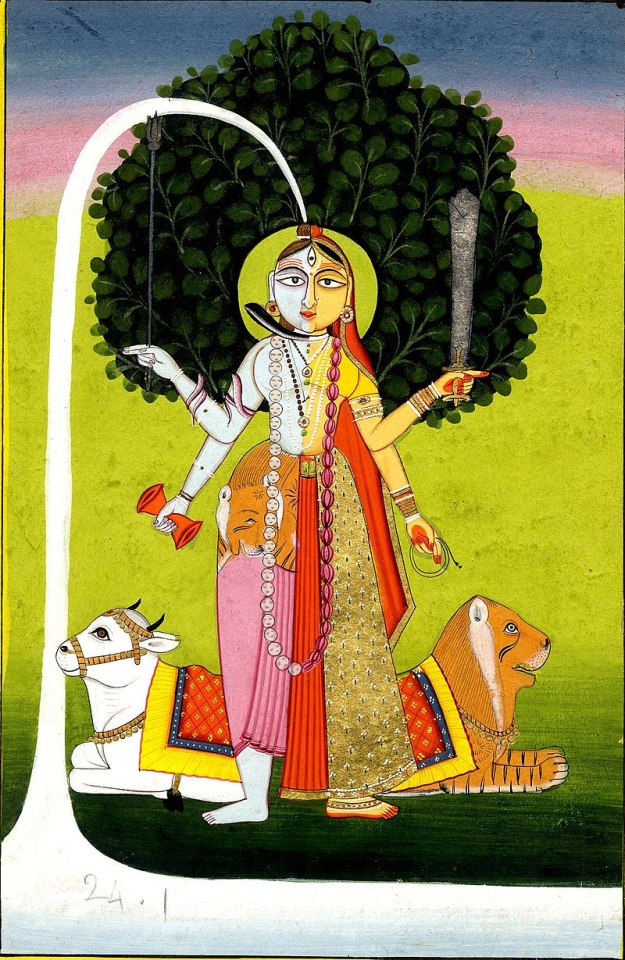
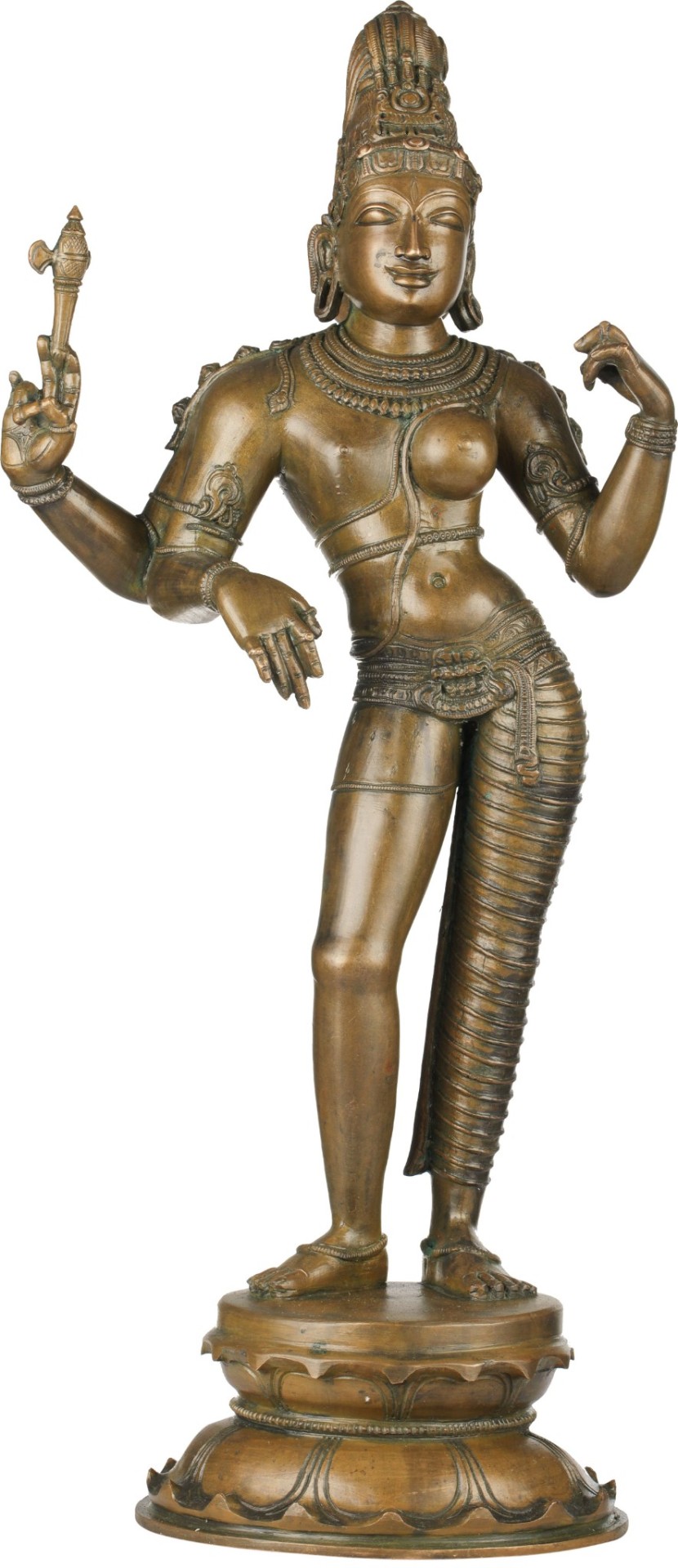
Come forth, Ardhanarishvara
The one whose name would literally translate "Half-Female Lord" from Sanskrit.
The form taken by the very supreme god Shiva when merging with his consort goddess, Parvati.
Ardhanarishvara represents the synthesis of masculine and feminine energies of the universe (Purusha and Prakriti) and illustrates how Shakti, the female principle of God, is inseparable from (or the same as, according to some interpretations) Shiva, the male principle of God, and vice versa. The union of these principles is exalted as the root and womb of all creation. Another view is that Ardhanarishvara is a symbol of Shiva's all-pervasive nature. And that's not even mentioning traditional Hindu notion of the "third gender" people known as hijras.
Or who can forget the gender nonconforming individuals of ancient Hawaiian and certain Native American tribes. "Two-Spirit" individuals, as they are called today.
These men and women behaved in a manner befitting both sexes and we're often permitted or even downright encouraged to participate in roles attributed to the opposite sex.
Mahū, as they were called in Hawaii, were "third gender" people with traditionally spiritual and religious roles in their society. Historically, it's been used primarily for those born male, but it's meaning had evolved since then and has come to refer to multitude of genders and sexual orientations in modern Hawaii.
Māhū were particularly respected as teachers, usually of hula dance and chant. In pre-contact times māhū performed the roles of goddesses in hula dances that took place in temples which were off-limits to women. Māhū were also valued as the keepers of cultural traditions, such as the passing down of genealogies. Traditionally parents would ask māhū to name their children.
The term itself may be used either pejoratively or respectfully when referring to modern LGBTQI+ people of Hawaii.
But yes
All these traditions and mythologies aside,
Hermaphroditism and Intersexuality had always been so very intriguing and inviting for me. Imagine my surprise to learn that over half of the plant world is hermaphroditic and in possession of both male and female reproductive parts. The same thing applies to creatures such as snails, slugs, leeches,etc. Not to mention a pseudo-hermaphroditism that occurs in female hyenas and cassowaries evolving pseudo-penises.
Or the very people who are born Intersex and thus possess characteristic of both sexes.
Gender dysphoria has been something I've come to consider a lot. Especially as of late. And I cannot deny that I've always felt amused when somebody happens to misgender me online.
Once I had been referred to as "ma'am" by an online friend of mine when rp-ing as a genderless character from an old video game.
I was intrigued not because I found it funny but rather endearing. Something deep inside told me that calling myself ma'am feels just as right as being announced as sir.
I've always felt as intersex in a way. At least in my subconscious.
I've always identified as pan or bi and felt attracted to both men and women (especially to dominant, muscular ones but that is a story for another day). But I was always particularly fond of gay shippings and stories. And it's very fun to see many best fanfics blur the line between "passive/feminine" partner and an "active/dominant" one. Only further emphasizing the duality within human being.
But, of course, my yearning to explore more themes of gender nonconformity and "Intersexuality" do not stop there.
Intersex People sorely lack in representation and it is never unwelcomed to behold a cool fictional character falling under that category.
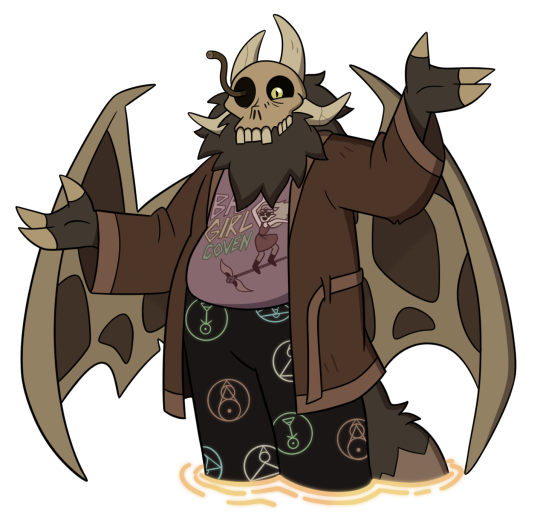
Seeing The Titan from The Owl House present themselves as bigender being was beyond awesome.
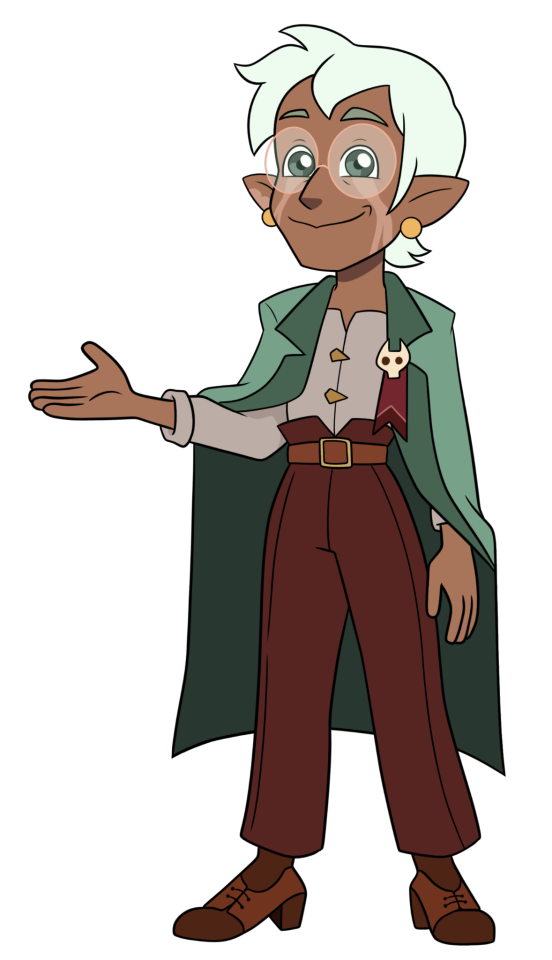
Not to mention that, while I don't know if they can be counted as such, Raine Whispers perfectly captures an androgynous non-gender specified appearance.

Or the amazing Body Swap mode that Shovel Knight offers to it's players. In which you are not only able to genderswap any important member of the original cast (and thus create semi-canon queer romances 😉), but also put your titular protagonist into a female body while giving then gender neutral or even masculine pronouns.
And how a very similar thing is included in the critically acclaimed masterpiece that is Elden Ring.

In which you are not just able to change your character's gender and body type at will, but also experiment with them. Putting a female head on a male protagonist (and vice versa) is a memorable and progressive feature for sure.
Sadly, however
Such portrayals aren't always in positive light.
One of my all time fav 3D Platformer franchises, Ty The Tasmanian Tiger, does include a villainous eldritch race of hermaphroditic shape-shifting extraterrestrials known as "Quinkans". Who serve as the main antagonists of the 3rd installment.
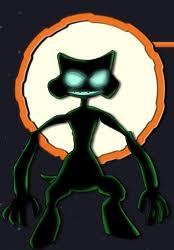
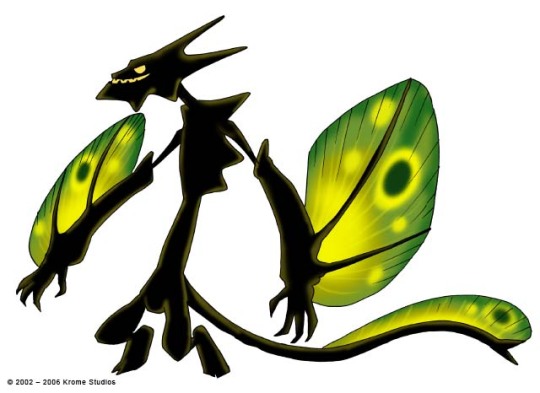
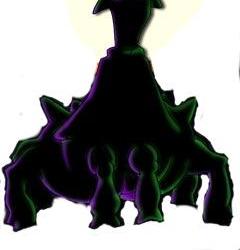
This also applies to old myths.
Take the old Romani mythology that includes a horrific self-fertilizing Poreskoro
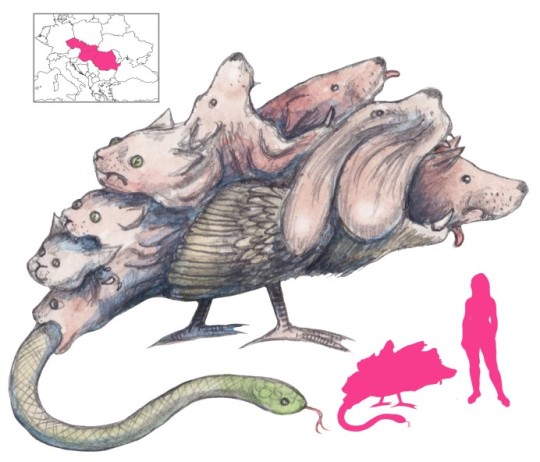
The progenitor of many illnesses that wreak havoc upon humanity to this very day.
But as with everything else. Bad ones should be separated from the good portrayals and not be taken as the root of all beliefs, thus giving rise to prejudices and negative assumptions.
And for the sake of not making this post hours long, I shall just end it by announcing my support for all the other people who feel similarly about themselves. And to say that it feels so very liberating to be true to one's self.
Yes I AM a guy. But I am also equally a woman. Not neither. But both. And I am so very glad to be a part of this wonderful social media where differences between people are highly celebrated and explored.
And I want to thank anyone who took time and energy to read through this little article of mine. Hope it wasn't too long or tedious to read.
And with that, I wish you all a wonderful day 💐💖
#confession#lgbtqia#self reflection#intersex#gay#gender dysphoria#self discovery#nonbinary#the owl house#fictional examples#queer representation#hindu mythology#mythology and folklore#greek mythology#third-gender#hermaphrodite#two spirit#bisexual#pansexual#gender
4 notes
·
View notes
Text
A federal judge has awarded $150,000 in damages and legal fees to a former Chicago Public Schools student who said she was forced to participate in “Hinduistic rituals” that violated her constitutional religious rights.
U.S. District Judge Matthew Kennelly ruled last week in favor of Mariyah Green, who had filed a lawsuit alleging she felt coerced to participate in the Quiet Time meditation program at Bogan High School in Ashburn despite her Christian beliefs.
In a statement, John Mauck, Green’s attorney, described the program as “a thinly veiled Hinduistic religious program” that asked participants “to make obeisance various ways to a member of the Hindu deities.”
“Mariyah Green’s Christian faith and her dedication to Jesus Christ makes worship of others, such as these idols, unthinkable,” her attorney said.
Green believed she had to participate in the program because she was told cooperation would count toward her grades, and she did not want to be kicked off the basketball team for poor academics, Mauck said. She had transferred to the school specifically for its basketball program.
In an email statement, a CPS spokesperson said the district removed the program from its schools in 2020 “but maintains that Quiet Time did not violate any student’s constitutional rights.”
The judge’s decision was the result of a “voluntary resolution between the parties akin to a settlement,” the spokesperson said in the statement. “The District has always denied, and continues to deny, any liability as a result of Quiet Time, and there has not been any finding of liability in this case by a judge or a jury.”
Both the Chicago Board of Education and the David Lynch Foundation, which developed the program, were named in the lawsuit. CPS is responsible for paying $75,000, and so is the foundation, which didn’t immediately respond to a request for comment Thursday evening.
The foundation’s website states the meditation program is intended to reduce “toxic levels of stress” in the lives of young people, and that it can lead to an increase in graduation rates and a reduction in schoolwide suspensions.
In the lawsuit, Green alleges the “Transcendental Meditation” program was held during school hours, and students were required to participate in an initiation ceremony called a “Puja” — an “expression of gratitude” to the dead founders of the practice.
During the “Puja,” instructors chanted words in Sanskrit containing “statements recognizing the power possessed by various Hindu deities and invitations to those same Hindu deities to channel their powers” without telling students what they meant, the suit states.
Green learned of the “hidden religious nature” of the program and shared the information with other CPS students and teachers at Bogan. When teachers reminded her to meditate, she told them it “was not normal” and asked why students weren’t learning, the suit alleges.
Green, who graduated from Bogan in 2020, felt “alone and angry” when her opinions on the program weren’t respected and she was not given a choice about whether to participate. Mauck said the program “was an egregious abuse of Mariyah’s religious right.”
He said: “We thank the court for the recognition of the critical Constitutional issues at stake here. Mariyah Green’s concerns have been justified, her voice has been heard, and the offending parties have been held accountable.”
#nunyas news#good for her#maybe the school could put up a few pics of mohammad#and see how that goes
4 notes
·
View notes
Text

hiiii lets be friends
if you’re into astrology & witchcraft, if you are a fashion girlyy, art history and bdsm lover, follow meeee.
all the lgbtqai+, hinduists, budhists, catholics (maybe) and all faiths looking for peace and kindness
.
4 notes
·
View notes
Text
Critical Race Theory in the CW Series: Arrow
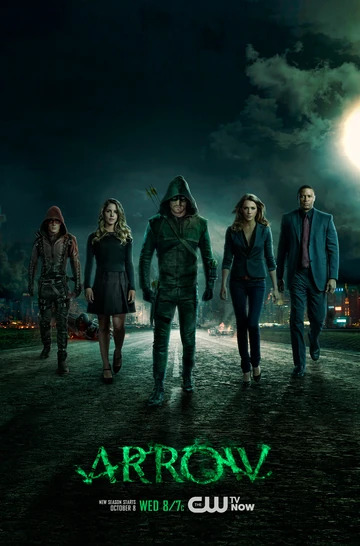
Transcript: https://docs.google.com/document/d/1SK4r5rn2i3Dz-4ymnkxqZKCOHO811h-41PcMA-WOxqA/edit?usp=sharing
Arrow (2012-2020) is a CW superhero show surrounding Oliver Queen, a millionaire playboy who gets stranded for 5 years on an island called Lian Yu after a Yacht trip with his father goes wrong. Upon getting rescued by a Chinese fishing boat, Oliver returns home with an agenda. He vows to protect his city as a vigilante, whom the police captain of the series later names “Green Arrow.”
My video essay discusses Critical Race Theory in relation to Arrow. Television, while fictional, is ultimately a reflection of societal values and the show runner’s world view. Critical Race Theory is the concept that the biased perception of race in society impacts the representation accepted in media, which leads to unintentionally distorted depictions of characters of color.
In chapter 5 of Ella Shohat and Robert Stam’s book, Unthinking Eurocentrism: Multiculturalism and the Media, Shohat and Stam discuss the diffulcty for the media to properly represent people of color due to their obsession with “realism” in a eurocentric society. This theory is especially reflected in the character Diggle, the only person of color for a while in the eight years that Arrow runs for. Diggle, played by David Ramsey, is introduced in the very first episode as Oliver’s bodyguard, a respected but nevertheless inferior position to our protagonist. In Shohat and Stam’s section “The Racial Politics of Casting,” they point out the recurring theme that “Europans and Euro-Americans have played the dominant role, relegating non-Europans to supporting roles and the status of extras. By episode 3, Diggle displays his abilities, fighting off an assassin from Oliver and his “friend,” Laurel. Throughout this exchange, Diggle gets caught in a headlock, forcing Oliver to come to the rescue and skillfully strike a knife into the hand of the assassin to give Diggle a leg up. Thus, Diggle is placed inferior to Oliver in both employment and physical skill. While some may find this sidekick role is crucial to the superhero narrative, it is also reflective of the level of representation accepted in the media. When looking at other pieces of media, it becomes evident that this relationship of white protagonist and black sidekick is a pattern. Examples of this trope can be found between Captain America and Falcon, and Iron Man and War Machine. Arguably, in both these situations, in the MCU, both Falcon and War Machine are no longer sidekicks - this also eventually becomes true for Diggle, which I’ll discuss later in this post. However, it took years for this to happen and these are only recent developments to their character.
Arrow further displays Eurocentric practices in its depiction of foreigners and foreign countries. “Inscribed within the play of power, language becomes caught up in the cultural hierarchies typical of Eurocentrism. English, especially, has often served as the linguistic vehicle for the projection of Anglo American power, technology, and finance” (Shohat 191). In Arrow, whenever a foreigner shows up, Oliver never has difficulty communicating with them because they all speak English. Even when Oliver is known to be fluent in another language such as Russian or Mandarin, both Oliver and the character(s) he is addressing opts for English. Examples of this can be seen in episode 3, where Oliver immediately assumes that Yao Fei, the skilled Chinese hunter also stranded on Lian Yu, speaks English. Despite Yao Fei answering in mandarin, his immediate understanding of Oliver’s English reflects a Eurocentric presence in the show.
In season 3, the show revolves around Nanda Parbat, a made up land that serves as the headquarters for the League of Assasins, who’s native language is Arabic. The show designs the headquarters with influences of South Asian and Hinduist architecture styels. Nevertheless, the immortal leader of the League of Assasins, Ra’s Al Ghul consistently chooses to speak English, even in private conversation with his daughters Nyssa and Talia Al Ghul. Some may argue that as an immortal being, it makes sense for Ra’s to be fluent in multiple languages such as English. However, Eurocentrism is also present in the wedding scene between Nyssa and Oliver, where the marriage officiant conducted the entire ceremony in English.
Delving deeper into the relationship between language and power in media, Shohat and Stam point out that ““People do not enter simply into language as a master code; they participate in it as socially constituted subjects whose linguistic exchange is shaped by power relations” (193). The correlation between language and power is prevelant in season 1 episode 3. In this episode, Oliver must prove himself to be Bratva, a Russian mob group of this universe, in order to gain the respect of two mechanics representing the Bratva. Oliver asserts his credibility, Oliver begins the conversation in fluent Russian. Upon confirming Oliver’s position as Captain in the Bratva, the two mechanics adapt their speech to suit Oliver’s most comfortable form of communication by speaking in English. This switch in language indicates the switch in power that Shohat and Stam were referencing in their book, as when Oliver wanted something, he appealed to the mechanic’s first language and vice versa.
Arrow, while conforming to Critical Race Theory in many questionable ways, ultimately readjusts its treatment of POC characters by the end of the series. This is done most noteably through the addition of the new Team Arrow, which consists of all POC heroes who, unlike the dynamic between Oliver, Felicity, and Diggle, see each other as equals and dismantle the hierarchy among teammates. This adjustment is still a reflection of Critical Race Theory as the show is aligning itself with society’s push for equal and proper representation of marginalized groups in 2016. 2016 was the year Trump was elected President, exposing a deep divide in America in regards to race, ethnicity, and culture. “The sensitivity around stereotypes and distortions largely arises, then, from the powerlessness of historically marginalized groups to control their own representation” (Shohat 184). Reflecting upon this point, the changing demographics of the Arrow cast in 2016 is reflective of the social scene during this time.
Lastly, as mentioned before, Diggle becomes much more than Oliver’s sidekick by the end of this series. Diggle’s character is most reflective of Critical Race Theory as he goes from being Oliver’s bodyguard to his best friend to his sidekick to his replacement when Oliver goes missing. Each of these identities however, while he becomes a more important and well loved character, is dependent on Oliver’s relationship to him. Furthermore, in Robert Stam and Louise Spence’s work titled “Colonialism, Racism and Representation: An Introduction,” they point out that “We should be equally suspicious of a naive integrationism which simply inserts new heroes and heroines, this time drawn from the ranks of the oppressed, into the old functional roles that were themselves oppressive” (757). Thus, by having Diggle become the Arrow in place of Oliver, Arrow supports the biased fantasy of a black man slipping into the role of a white vigilante without consequence. Nevertheless, by the end of the series, Diggle begins to form his own identity outside of what it is in relation to Oliver. Diggle begins to prioritize his wife and children, and by the last episode, he makes the decision himself to turn down the opportunity to become Green Lantern. This decision is momentous because in the earlier seasons, Diggle wanted more than anything to be a hero and measure up to Oliver’s legacy. By allowing Diggle to choose his own narrative that swerves from audience expectations, Arrow reflects the shift in racial bias and the progress within the television industry, as showrunners are now taking initative to minimize the othering of POC characters. After all, “a film inevitably mirrors its own processes of production as well as larger social processes” (Shohat 187).
Braudy, Leo, and Marshall Cohen. Film theory and criticism: Introductory readings. New York: Oxford University Press, 2016.
Shohat, Ella, and Robert Stam. Unthinking Eurocentrism: Multiculturalism and the media. London: Routledge, 1994.
@theuncannyprofessoro
4 notes
·
View notes
Note
Thoughts on Islam? Your link for it is broken. Also assuming you're a critic of it, do your critiques extend to Mormonism?
It is difficult to summarise my beliefs but I believe Islam is a totalitarian ideology that seeks to make the whole world submit to it. It is a huge global contributor to the oppression of women, sexual minorities, and religious minorities. Shariah law i.e. Islamic law permits female genital mutilation and the killing of homosexuals and apostates from Islam. Globally Islam also is a breeding ground for terrorism since Islamic scripture promises Heaven to those who die as martyrs. It is often said that groups like Al Quada and Hamas have little to nothing to do with Islam or that they are based on fringe, far fetched interpretations of Islamic scripture when scripture is actually pretty straight forward. For Western governments is not always easy to seperate "moderate muslims" from "radical Islamists". Germany recently raided several mosques thought to support or glorify the October 7 attack in Israel. Lots of mosques in the West receive funding from foreign regimes so these are playgrounds for radicalisation (though this also happens a lot online). Even white Westerners from Christian or atheist backgrounds have joined ISIS due to radicalisation on the Internet. So to summarise I don't think very highly of Islam. I am somewhat scared of it so technically that makes me an "Islamophobe" if we go by the literal meaning of a phobia.
I don't know much about Mormonism. It is quite a small church in my country. I do agree that Christianity also has extremist branches that call for taking away rights of women and minorities though I am not aware of any Christian terrorist groups that call for violence or the creation of a Christian state (the abolishment of secularism). I think Islam as such poses a greater threat to institutions like rule of law and democracy. Surveys have shown that significant numbers of muslims in the West value the Quran more than our secular laws. A large portion of terrorist attacks in the West are carried out in the name of Islam whereas I cannot think of a single terrorist attack carried out in the name of any other religion in the past 20 years. Muslims are protesting in the streets waving around flags associated with ISIS and Hamas, calling for Jihad, inciting anti-Semitism. I am not seeing other religious groups partaking in these acts en masse or similar acts. So to a degree I criticise all religions if they scrutinise the position of women and minorities in society but I think some criticism is unique to Islam, at least unique in so far as I don't see other religious groups portraying similar actions in Western countries. This is very much from a Western perspective. My country has three dominant religions (Christianity, Judaism, and Islam), of which Islam is the second to largest group (roughly 7% of the total population), so that is my frame of reference. We technically also host Buddhist and Hinduist minorities but there are so small that barely anyone even knows anything about these religions
5 notes
·
View notes
Text
(Humanized) Ishani headcanons
Hello, my lovelies, long time no see. Do you like Ishani? What do you think of her in general? Well, to me she's… an interesting character. I'd like to know more about her, but unfortunately, that's not the case. We can only speculate…but we'll never know what really was :(
My headcanons:
Ishani was born on May 28th, 1989, in Faridabad, Haryana.
Ishani's parents are Riya Kakkar and Krishan Kakkar. They own a henna company. They are conservatives…
Riya and Krishan have 6 children. Ishani is the third oldest, the middle child. She has an older sister Ayana Kakkar (born in 1988) and an older brother Jai Kakkar (born in 1986). And, of course, she has younger siblings. Two sisters, Parvati (1991) and Prisha (1993), and brother Raj Kakkar (1995). Living in a large family is not easy, especially when you are the middle child.
Her family is quite well-to-do, so she went to one of the best schools in Faridabad. She graduated with A's, but she had no choice, her parents were so demanding.
At the age of 17, Ishani enrolled in flight school. She likes flying all her life. Her parents were against it, their main argument being that it’s "not a woman's profession”. This led to a huge quarrel, and to Ishani being out of touch with her family for a so long time.
At the age of about 19 Ishani started racing.
Ishani is a bisexual woman (just like me…). She had a relationship experience with a girl when she was in her early 20s. But she does have more experience with men, some part of it is contentedly sad…
Her family is Hinduists, but after a quarrel with her parents, Ishani began to realize that she didn't need all that religious stuff and generally…she doesn't believe in all that stuff. Now she is an atheist (I’m also an atheist…).
She had been Ripslinger's girlfriend for some time. Not that she had any special feelings for him. She had achieved a lot without him. Before her relationship with Rip, she became a Pan-Asian champion, etc. But she agreed to a relationship with Rip because of her career…did she doubt herself? Anyway, she can achieve everything on her own.
But later, thanks to Dusty, she made the right conclusions and ended any relationship with Ripslinger. Ripslinger is still angry with her and thinks Ishani is a traitor.
Well..that’s all..well.. What character should I make a post like this about?
In the meantime…
Bye)
See ya,
Your Sofia
#disney planes#planes disney#pixar planes#humanization#planes ishani#cars fandom#planes fire and rescue#planes#disney planes fire and rescue#headcanons#planes fandom#planes headcannons#disney
6 notes
·
View notes
Text
An imagined day in the life of a psychic..
Stacey herself said that when she wakes up in the morning, she asks Spirit and her soul family, 'what am I going to do today?' And they will guide her.
It is important to note that Hinduist and Buddhist elements and inspirations are tied into this subculture.
After going to bed, asking my body to heal itself of any ailments and injuries, I would wake up feeling refreshed and ready for Spirit to guide me. I would ask to be led to wherever I needed to be that day, and to realize things that were meant for me to see. I would also ask that things that were not meant for me are to be diminished. I may also write down any dreams that I had, good or bad, in a journal so those messages can be interpreted.
Because the body is the vessel for the mind and spirit, I ensure that I eat well and exercise. Everything after would likely appear similar to my regular day-to-day life now, because psychics are normal people. Some have regular day jobs, they attend social gatherings with their friends, they have other hobbies and obligations, many are probably parents and have responsibilities involving their children. So, the rest is likely your average day with frequent or infrequent bursts of clarity, visits from people who are trying to connect, or hearing what your spirit guides have to tell you about today, tomorrow, this person, and that person.
A lot of psychics are prone to absent-mindedness due to the influx of activity being channeled through their mind and spirit, so forgetting a few things here and there or letting the laundry pile up would be easily understood as well. At the end of the day, I would clear my mind and further ensure that no judgement, no ill-will, and no victim mentalities existed in my mind and soul. Everything is as it should be because it is all in my path, and I have power over my path with the help of Spirit and my soul family.
0 notes
Text
An Abbreviated and Simplified History of Medicine and the Physician Role
30 000 BCE: Cave paintings from almost 30,000 years ago show scenes of medicine people and community members participating in healing ceremonies and exchanging medicinal plants.
Let us remember that mental and physical affliction was always related to sacred beliefs and caused by the power of divinities. At the time, medicine people used magic and herbal potions to cure demons' spells.
3000-2000 BCE: The Sumerians, considered the first organized widespread civilization, reported detailed surgical procedures, medicinal plant prescriptions, and exorcism on clay tablets from 3000 to 2000 BCE.
Of importance, history reveals that women were surgeons and doctoresse since 3500 BCE, especially in Egypt, Italy, and Greece. During the antiquity and the development of the Greek civilization, we see the emergence of the rational and scientific method to push back against the supernatural. Many Greek thinkers were inspired by the ancient Egyptian civilization, who left behind knowledge about many healing agents.
1500 BCE: Ancient Indian Medicine was centered around Ayurvedic practices, based on a sacred Hinduist text, The Atharvaveda. Traditional Chinese Medicine is based on acupuncture, herbal mixtures, and other therapies practiced for thousands of years. However, the golden age of medicine started with the Zhou dynasty and was shaped by Taoist healing practices. Note that women were well-respected priests and healers at the time.
1100-146 BCE: The Ancient Greeks had a holistic approach to medicine and thought that environmental issues, trauma, and beliefs played a role in ailments, encompassed in the humoral theory. As the practice of trial and error took root, beliefs about divine punishment and grace were replaced by scientific theories based on biological cause and effect.
Doctors at the time actively preached that imbalances between the four humors: blood, phlegm, yellow bile, and black bile were responsible for illnesses. SES was also a concern as poor people were more afflicted by deplorable living conditions, giving rise to injuries, sanitary-related diseases, and famine.
440-360 BCE: Hippocrates, considered the foundational figure of modern medicine, established the first medical school at Cos and began to document different illnesses with his apprentices. They created medical terminology and drafted the first binding document of ethics called the Hippocratic Oath.
It is still in use today and affirms that physicians must follow a set of guiding and ethical principles in caring for their patients. Other prominent Greek physicians who inspired modern medicine are Asclepius, Diocles of Carystus, and Praxagoras of Cos. Their lasting influence was felt on European and Islamic medicine until the 14th century. We should also note that Aristotle, one of the most influential philosophers from antiquity, was greatly concerned about empiricism in its ecological and natural environment and influenced the advancement of medicine at the time.
400-1453 CE: Byzantine Medicine built upon the medical knowledge of the Greco-Roman empire and compiled it into textbooks. Islamist physicians became experts in anatomy, ophthalmology, pharmacology, pharmacy, physiology, and surgery, and their contributions and rigorous record-keeping pulled Europe out of the Dark Ages.
476-1450 CE: Unfortunately, during the Middle Ages and the rise of the male-dominated clergy, women were forbidden to practice surgery and medicine, among other things. However, in small pockets of Europe, between 100 CE and 1300 CE, cities like Bologna, Paris, and Oxford opened medical schools to teach rudimentary surgery and medicinal treatments. Students from wealthy families all over Europe would pursue academia for about eight years, three years of pre-med, and five years of medical school, which is relatively similar to today's curriculum's length without counting residency. Of note, a woman physician was awarded her degree in Sicily in 1376.
1600s: In Early Modern Medicine, in the 17th century, the civilian–physician ratio was still small, with a majority of unlicensed practitioners, of which 25% were women. Two key aspects that marked the Renaissance were the uptick in dissections, which fueled the advancement of anatomy and blood circulation understanding, and the microscope. Nuns played a fundamental role in hospitals and were the precursors of nurses in Catholic countries.
1700s: During the 18th century, the Age of Enlightenment, physicians became respected academics and saw a rise in social status.
1800s: The early 19th century marks the era of Late Modern Medicine and the rise in microbiology research to understand microorganisms like bacteria. New sanitary measures, like surgeons washing their hands thoroughly, were implemented, saving countless lives. Louis Pasteur and others introduced vaccines. Nursing schools opened in the late 19th century and became an attractive career for aristocratic and bourgeois women.
Elizabeth Blackwell was the first woman to earn a medical degree in 1849, but it was still challenging for women to become physicians in the United States until the 1970s.
0 notes